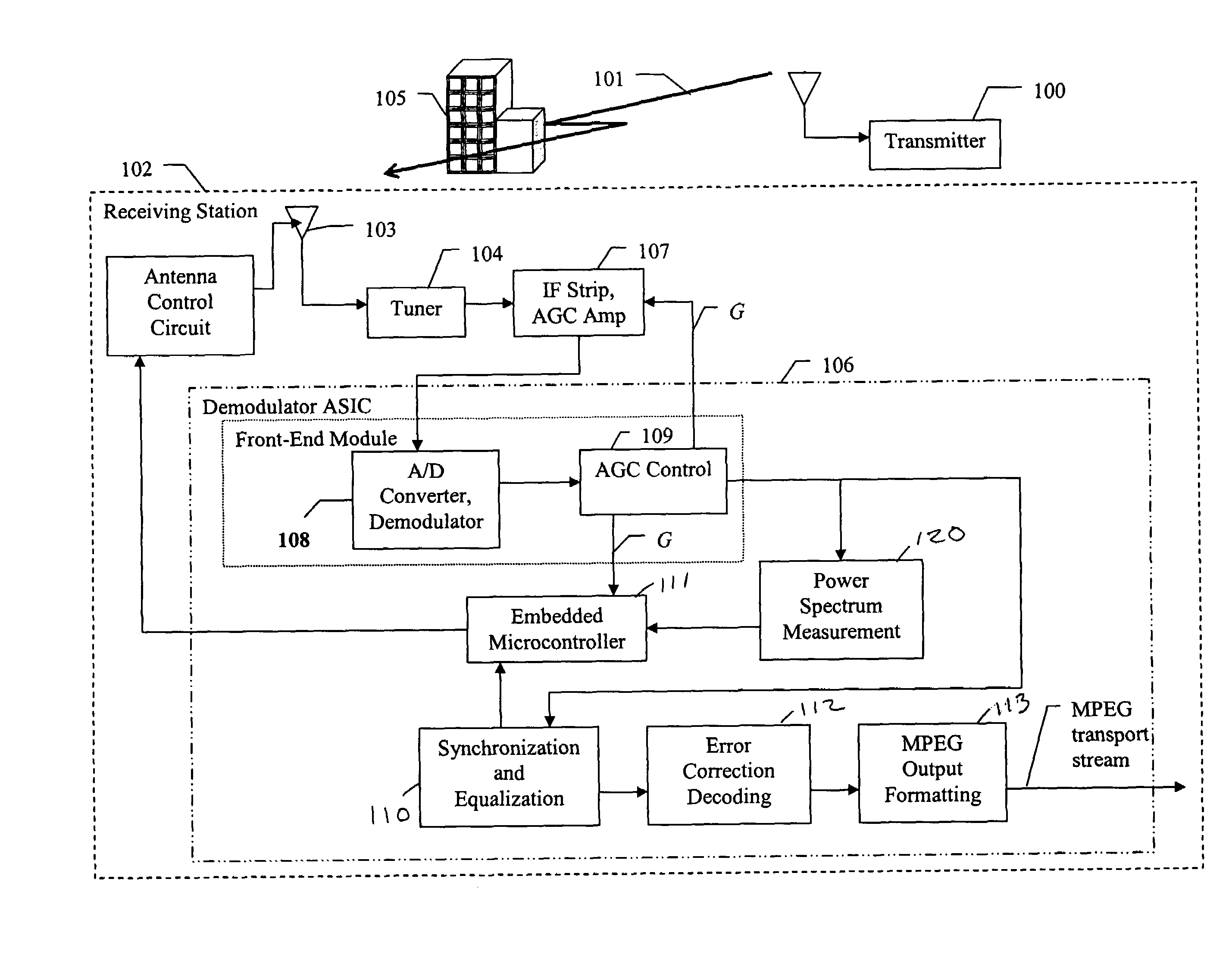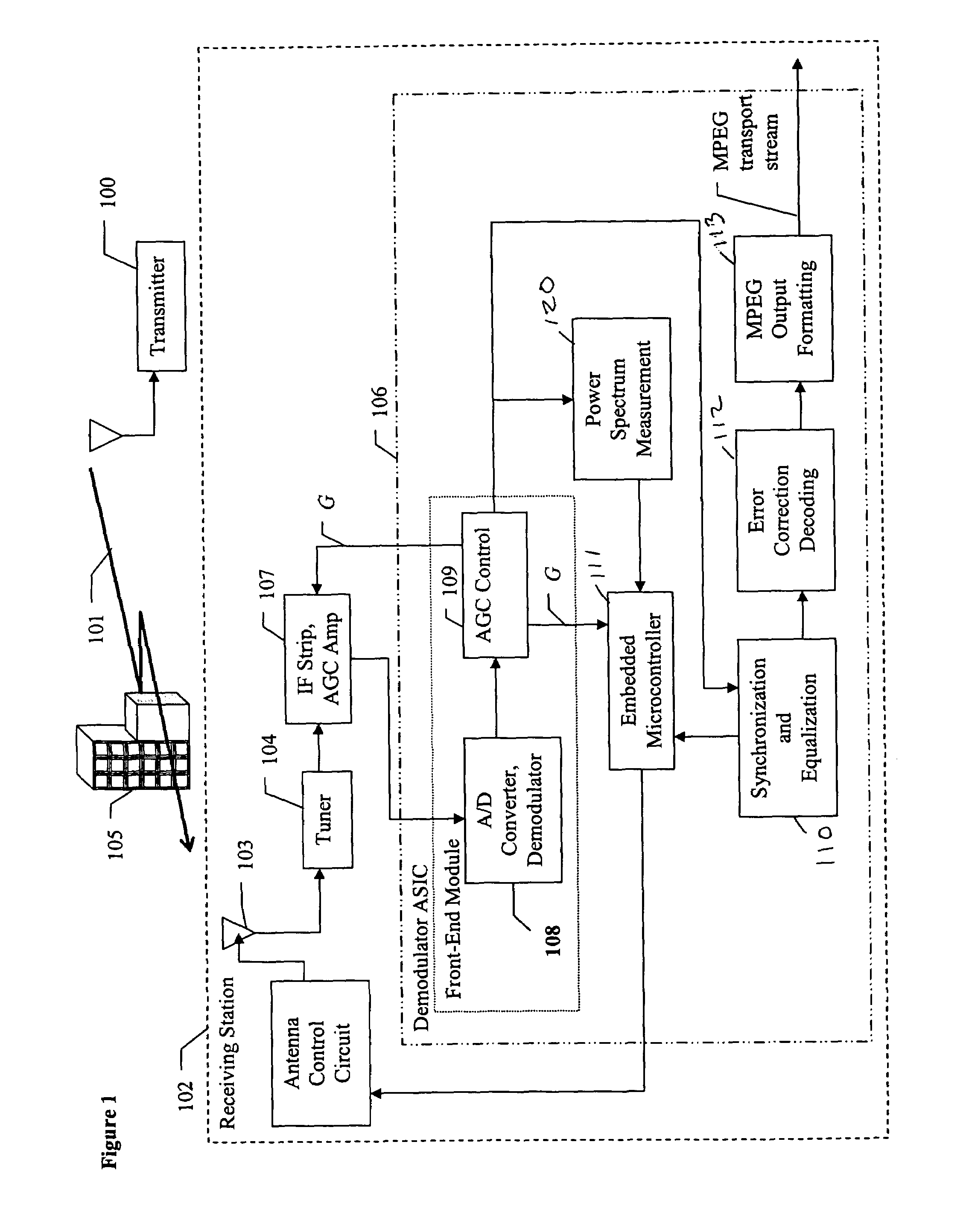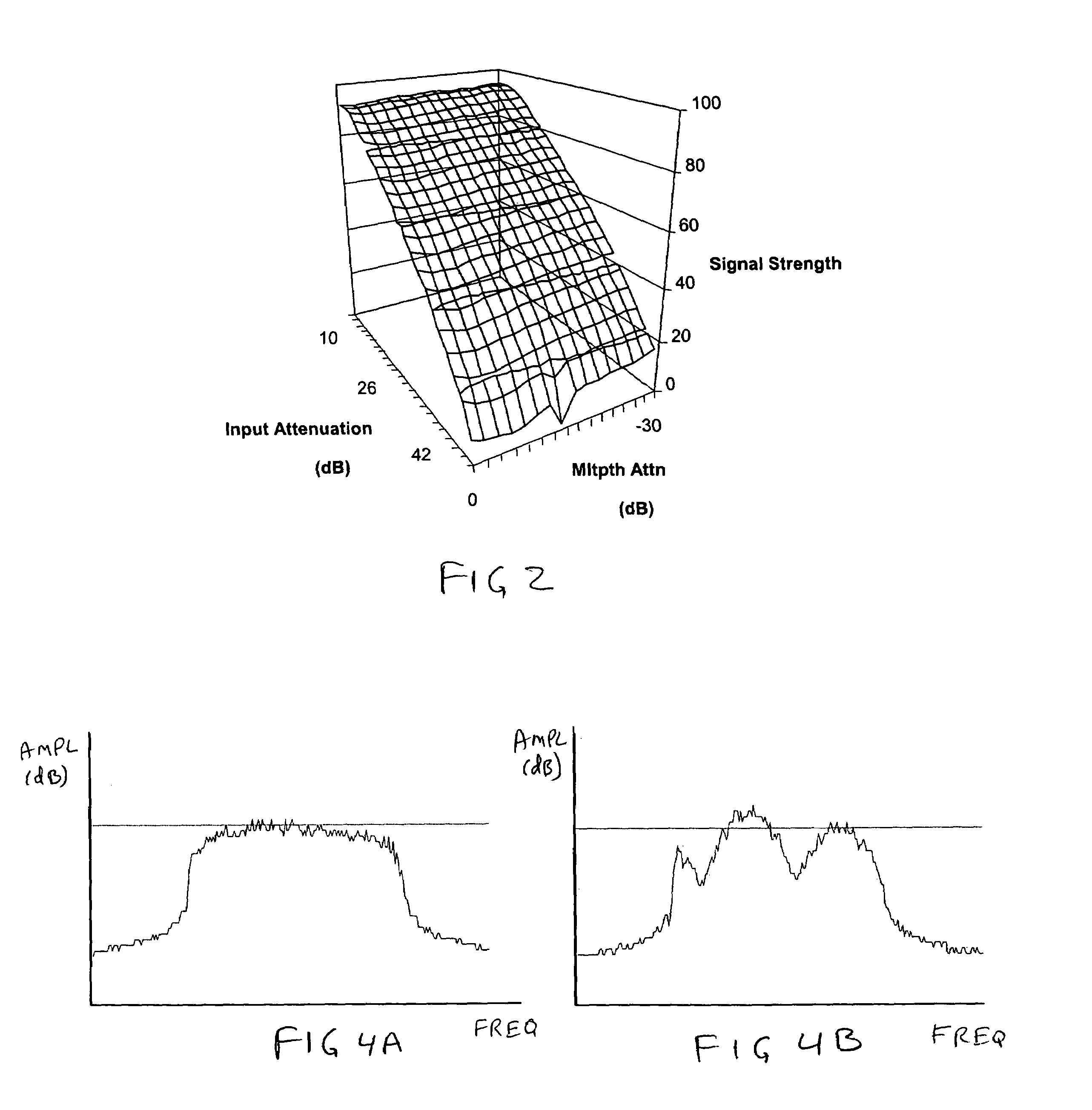Method and apparatus for controlling a smart antenna using metrics derived from a single carrier digital signal
a technology of digital signal and smart antenna, applied in the direction of site diversity, spatial transmit diversity, polarisation/directional diversity, etc., can solve the problems of multipath interference, low gain of antennae, and difficult reception of single carrier digital tv signals using indoor antennas
- Summary
- Abstract
- Description
- Claims
- Application Information
AI Technical Summary
Benefits of technology
Problems solved by technology
Method used
Image
Examples
Embodiment Construction
[0028]One element in a DTV receiver according to the subject invention, which is different from prior DTV receivers, is that the equalizer introduced to remove the multipath interference operates on a single signal, which is precisely the signal furnished by the optimum smart antenna. The optimization of the smart antenna uses the assumption that the demodulator applies the best possible equalizer (i.e. the one which provides the minimum bit error rate (BER)) associated with each possible antenna combination and each possible local DTV transmitted channel. In other words, the approach uses a two-step procedure. In a first step, the optimum smart antenna setting is deduced from the assumption that a theoretical optimum post processing equalizer will be applied to the signal, and in a second step the optimum equalizer (or a closed-form solution) is applied to the best received candidate signal. Metrics that confirm the optimum setting are then computed and fed back to the smart antenn...
PUM
 Login to View More
Login to View More Abstract
Description
Claims
Application Information
 Login to View More
Login to View More - R&D
- Intellectual Property
- Life Sciences
- Materials
- Tech Scout
- Unparalleled Data Quality
- Higher Quality Content
- 60% Fewer Hallucinations
Browse by: Latest US Patents, China's latest patents, Technical Efficacy Thesaurus, Application Domain, Technology Topic, Popular Technical Reports.
© 2025 PatSnap. All rights reserved.Legal|Privacy policy|Modern Slavery Act Transparency Statement|Sitemap|About US| Contact US: help@patsnap.com



